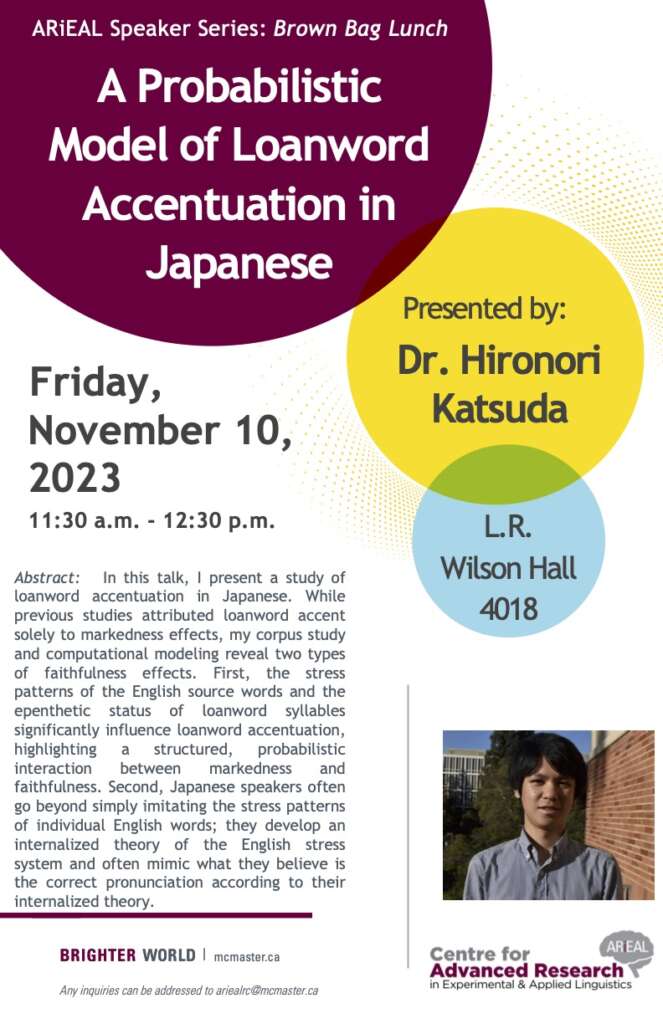
Please join us for our first Brown Bag speaker event of the semester! Dr. Hironori Katsuda, a postdoctoral researcher at the University of Toronto, and a graduate of the Department of Linguistics at the University of California, Los Angeles will present a paper titled “A Probabilistic Model of Loanword Accentuation in Japanese.”
This event will take place on Friday, November 10, 11:30am-12:30pm at LRW 4018. This will be a great opportunity to learn about new, groundbreaking research in the world of Language Science!
Dr. Katsuda provided the following abstract:
In this talk, I present a study of loanword accentuation in Japanese. While previous studies (e.g., Ito & Mester, 2016) attributed loanword accent solely to markedness effects (i.e., language-internal principles), my corpus study and computational modeling reveal two types of faithfulness effects. First, there is faithfulness to English source words. The stress patterns of the English source words and the epenthetic status of loanword syllables play a crucial role in determining loanword accentuation. Contrary to the popular belief that accents driven by faithfulness are sporadic exceptions, my research identifies a structured, probabilistic interaction between faithfulness and markedness. This means that faithfulness-driven accents are more likely to be permitted when the violation of markedness effects is relatively modest. Second, my study uncovers faithfulness to Japanese speakers’ implicit knowledge of the English stress system. In brief, the idea is that Japanese speakers are not simply imitating the stress patterns of individual English words, but develop an internalized theory of the English stress system, and often what they are imitating is not the actual source word pronunciation, but the predicted pronunciation according to their internalized theory. Incorporating this module into the model captures the accent patterns characterized as hyperforeignization.

